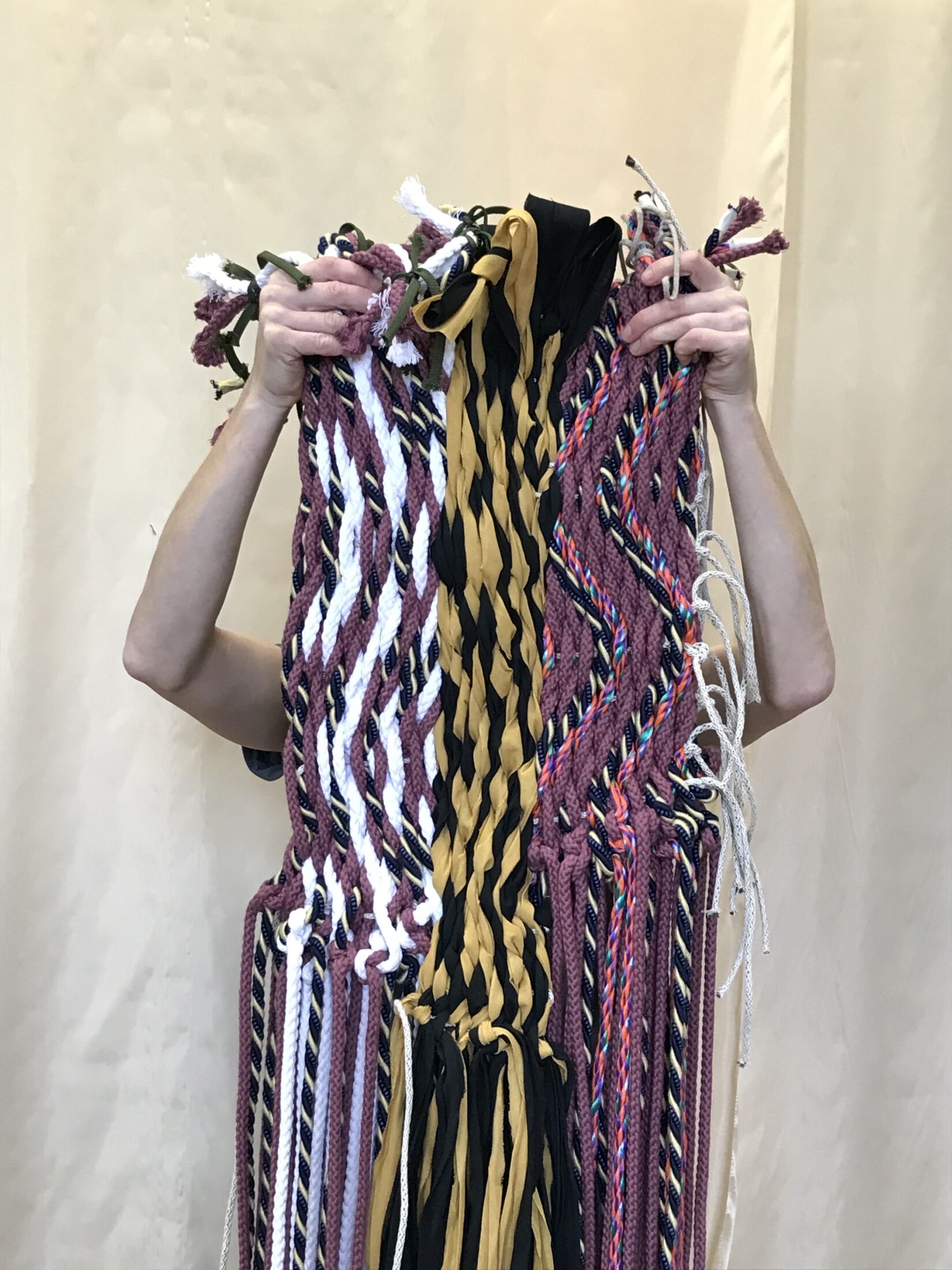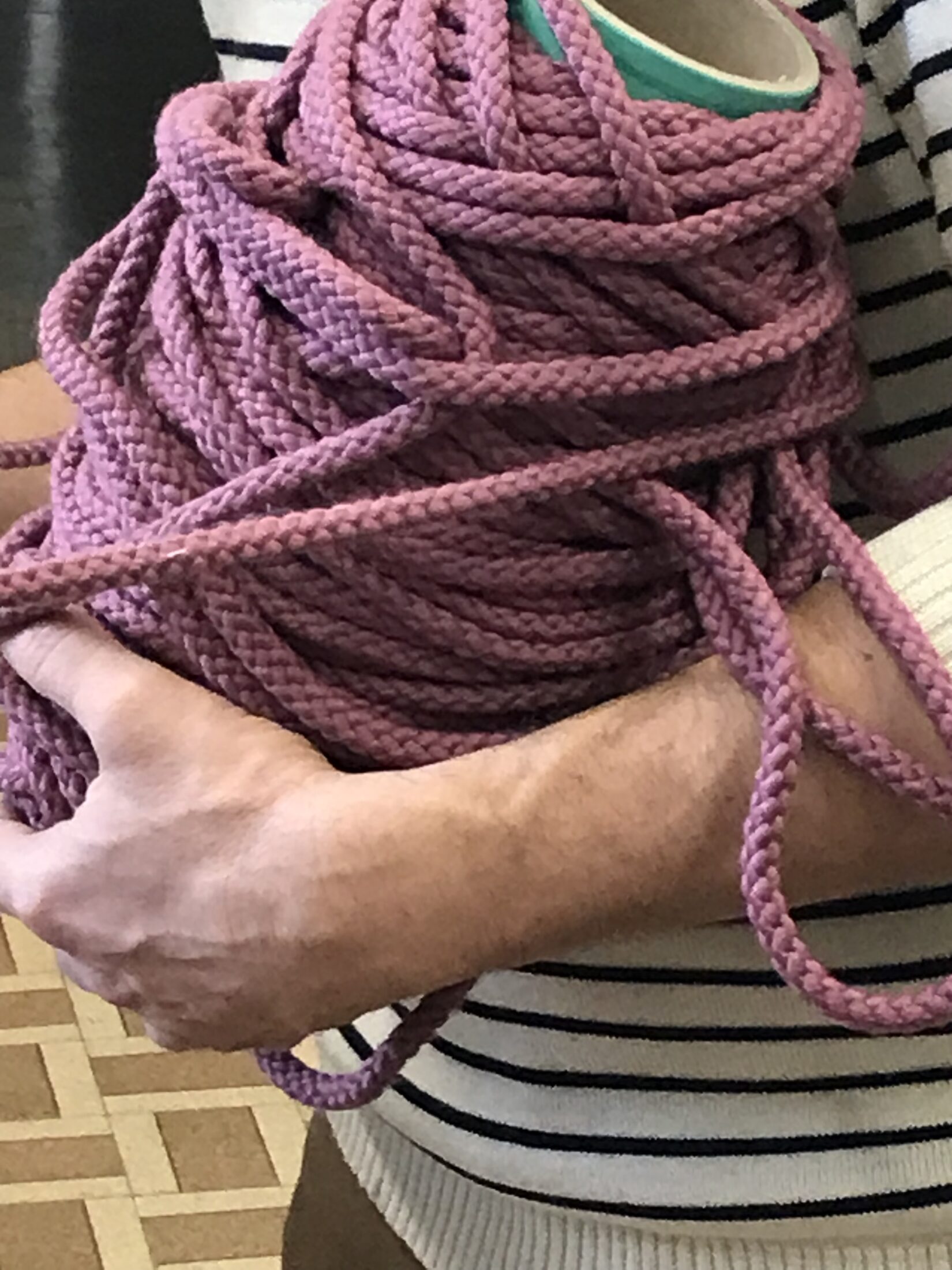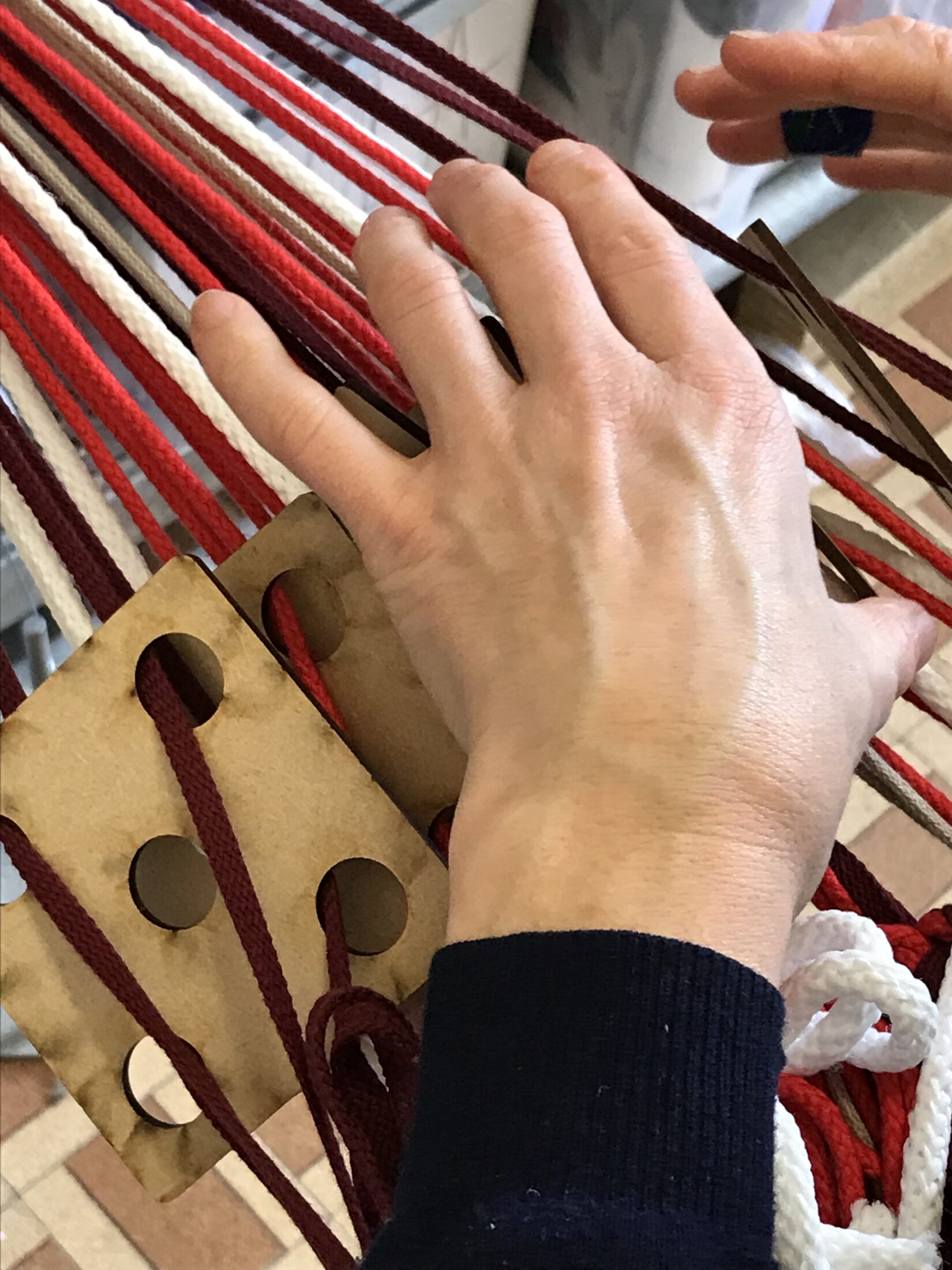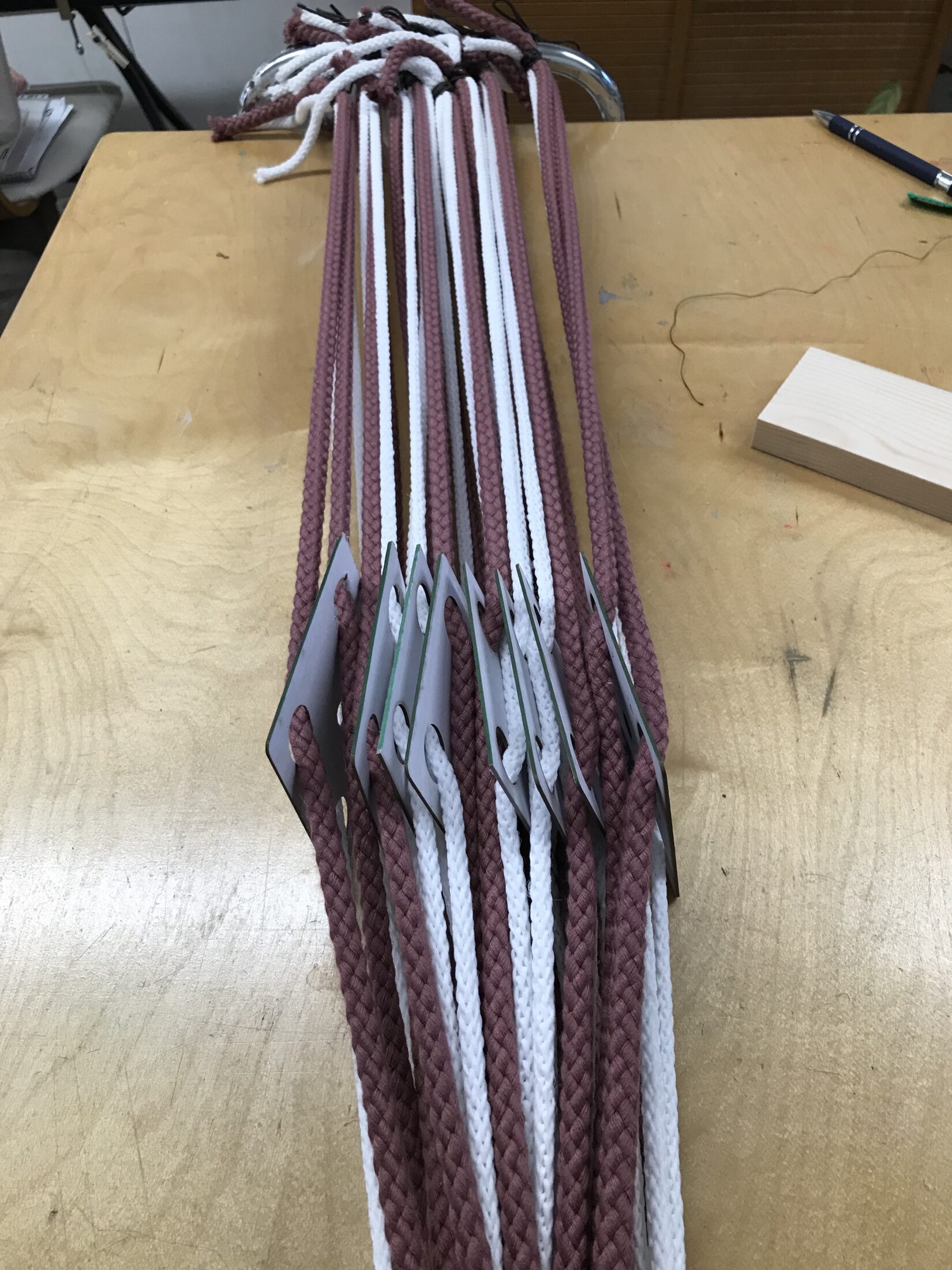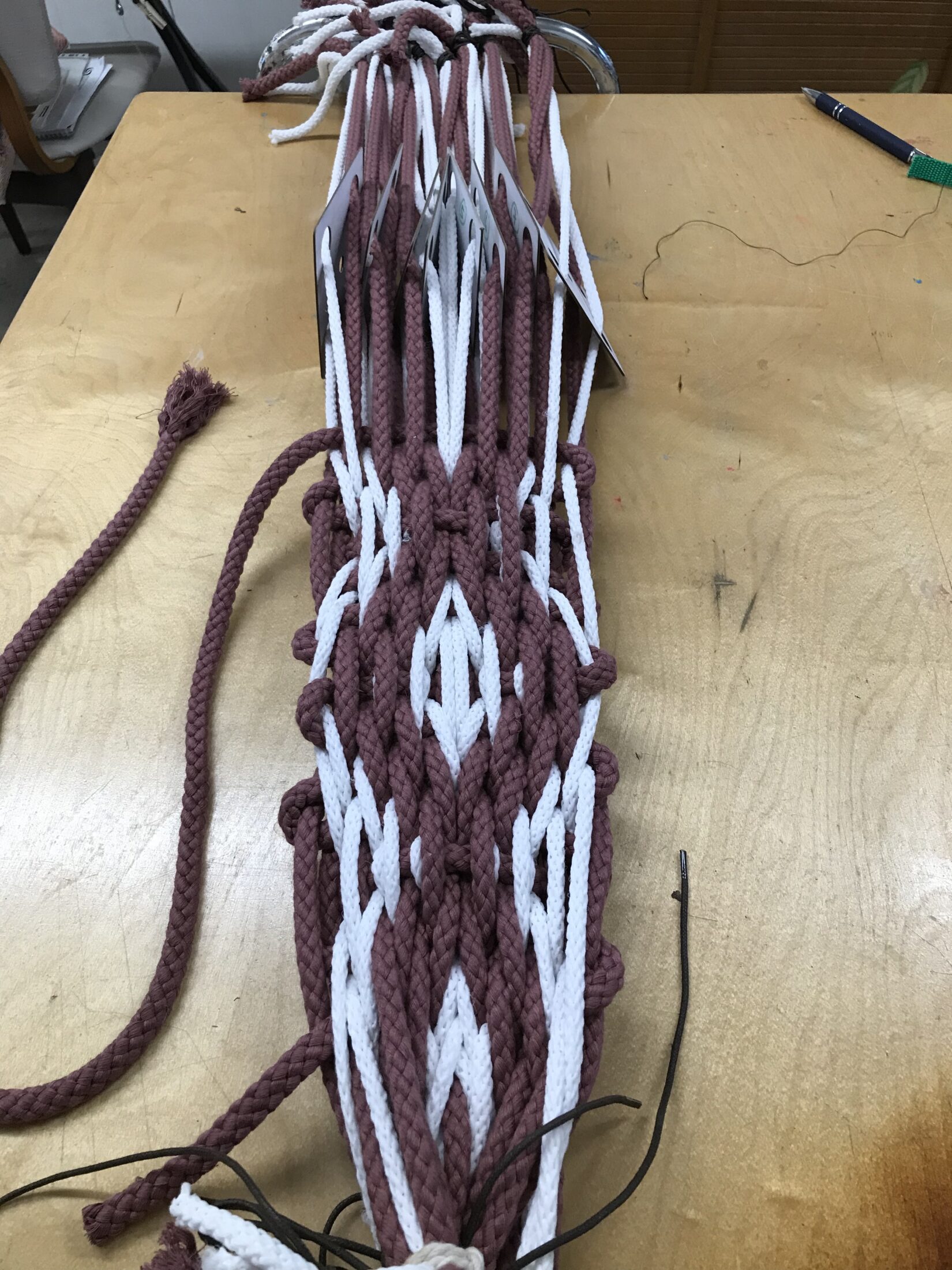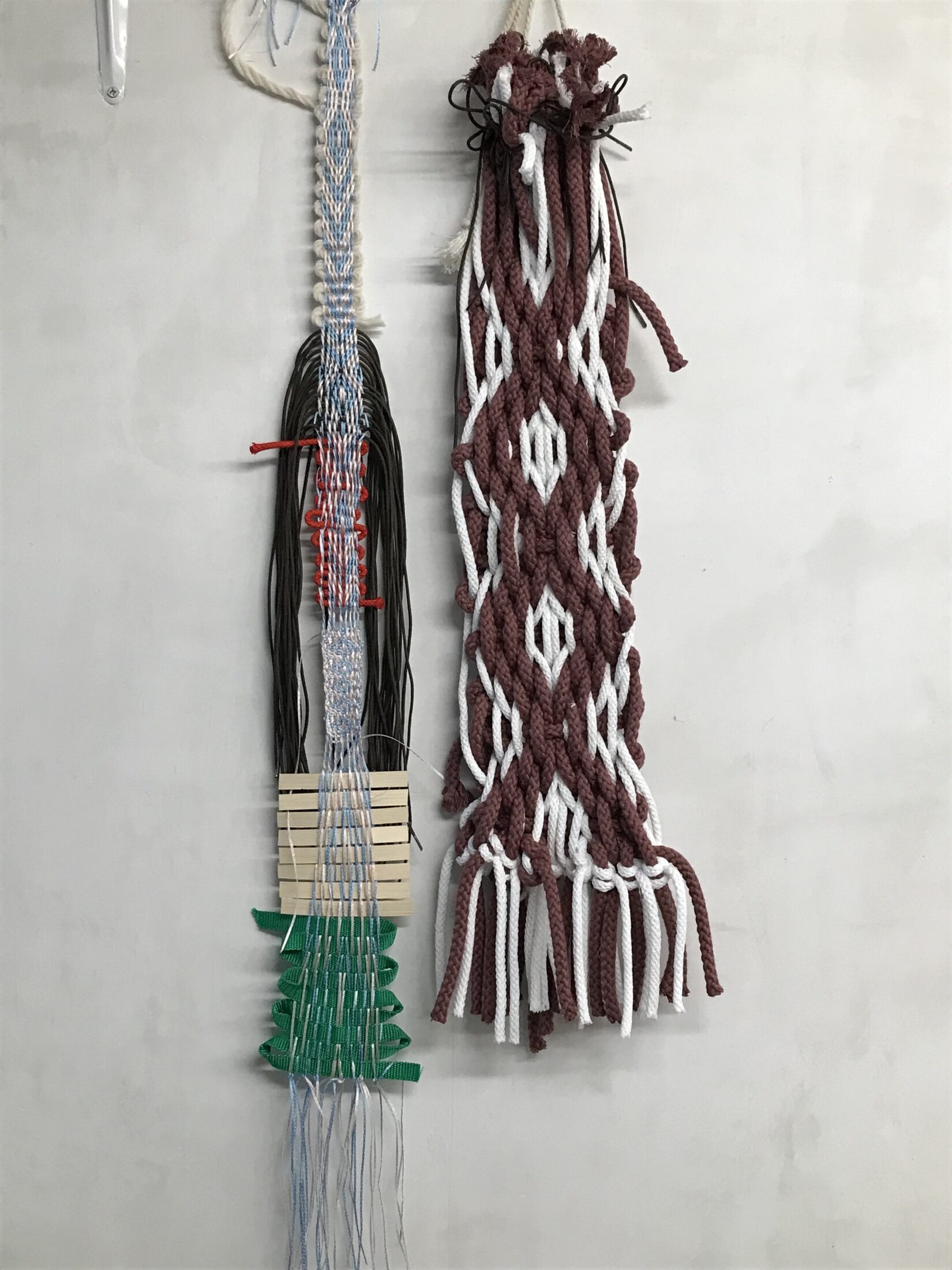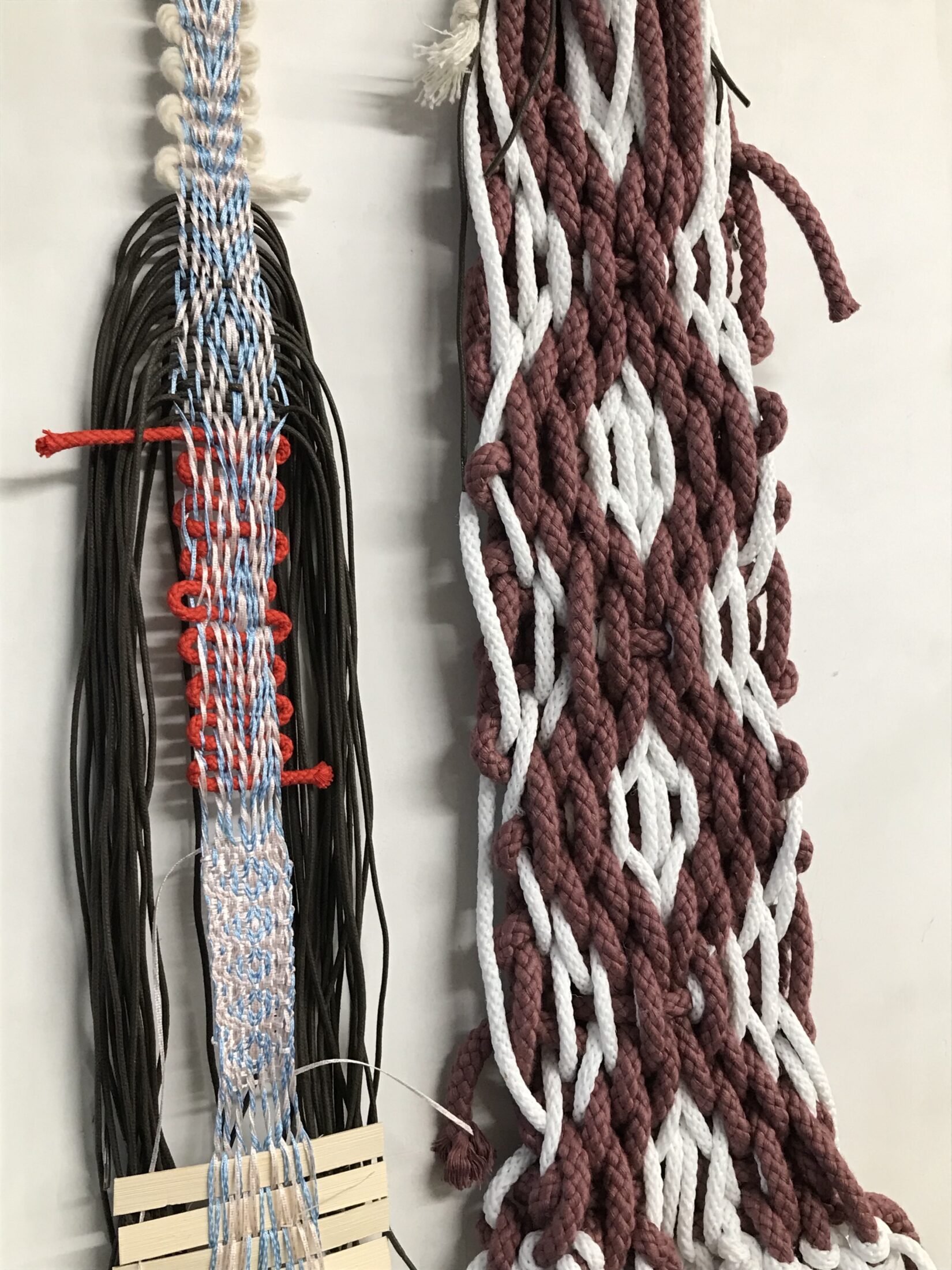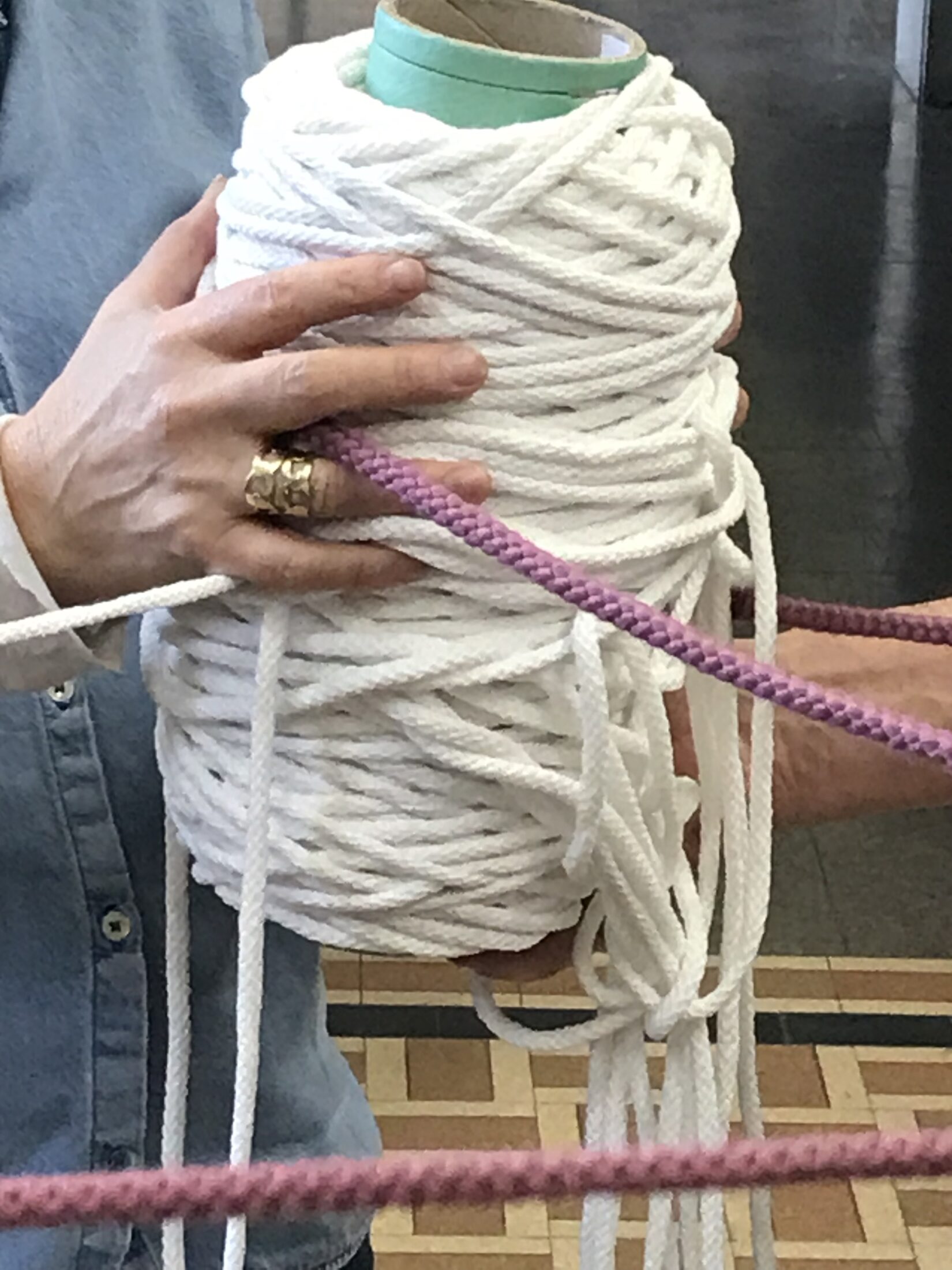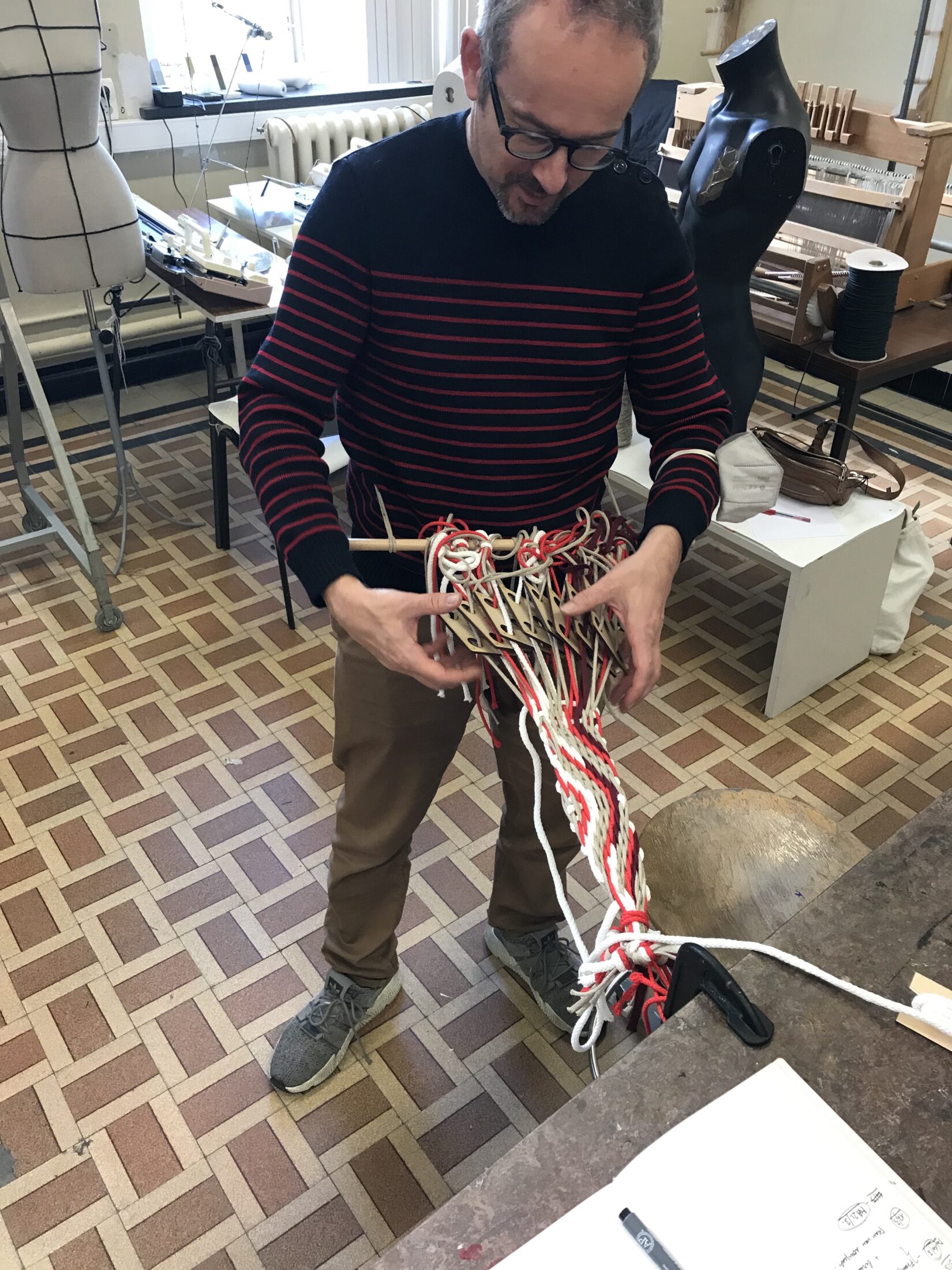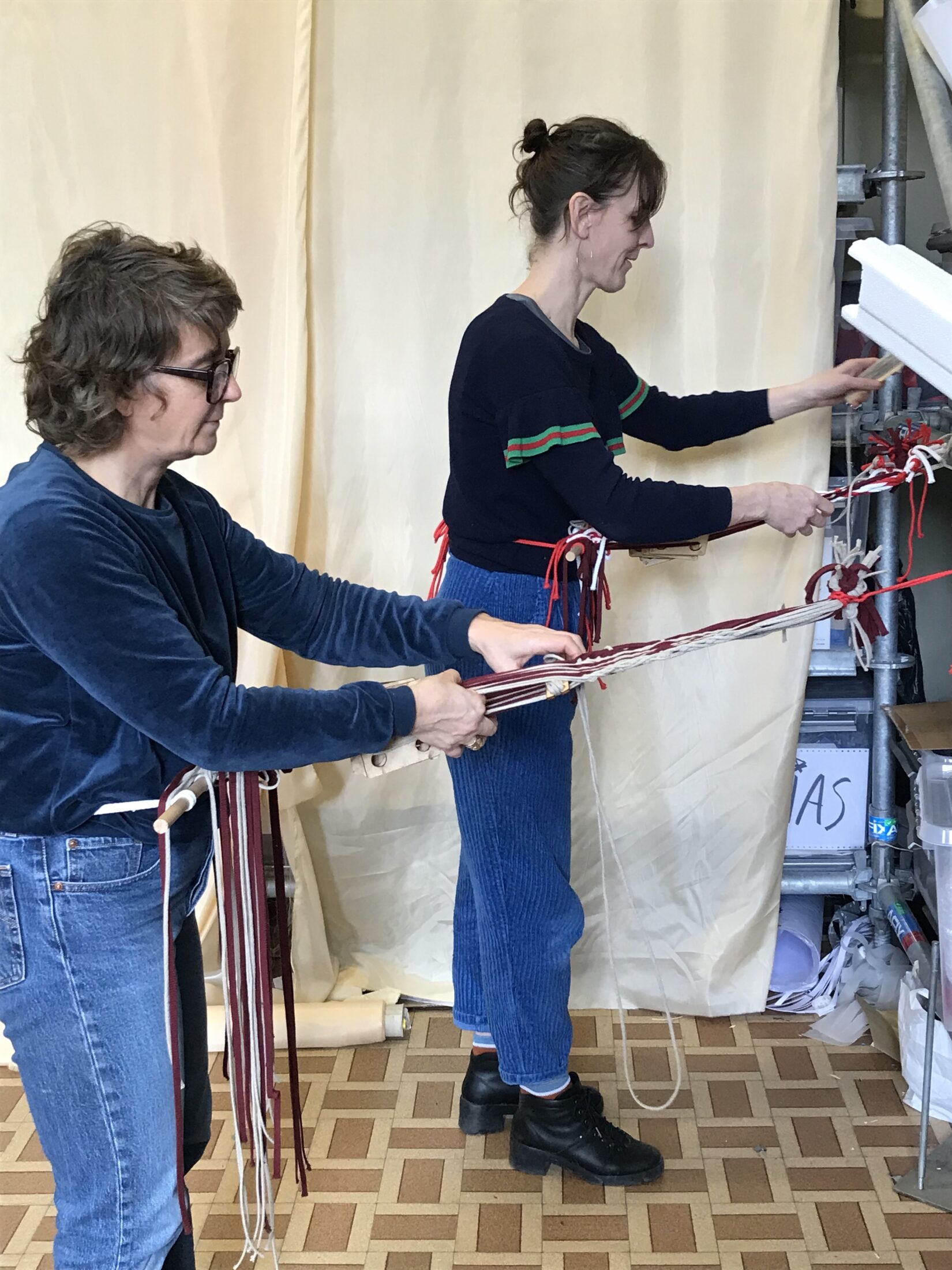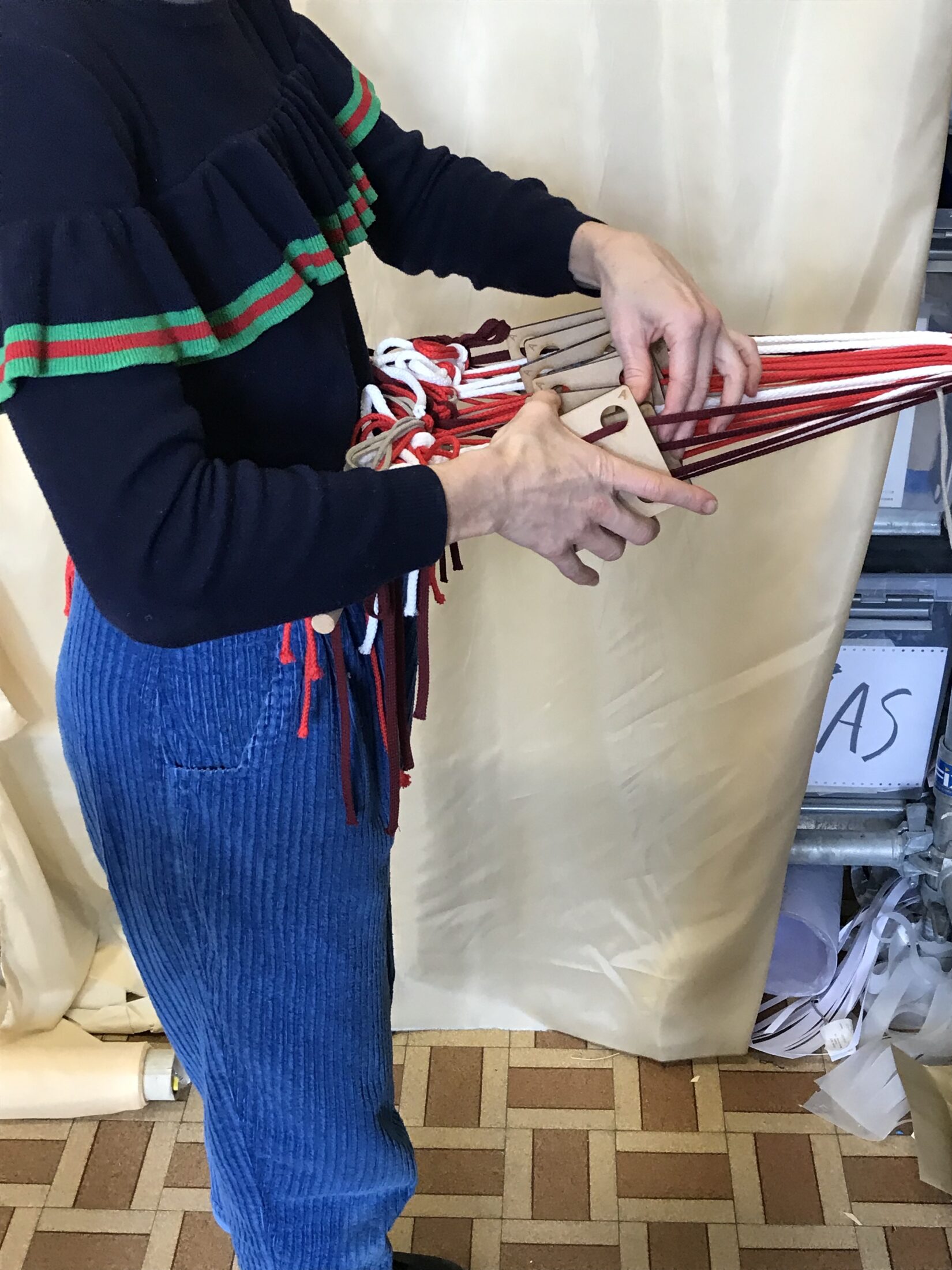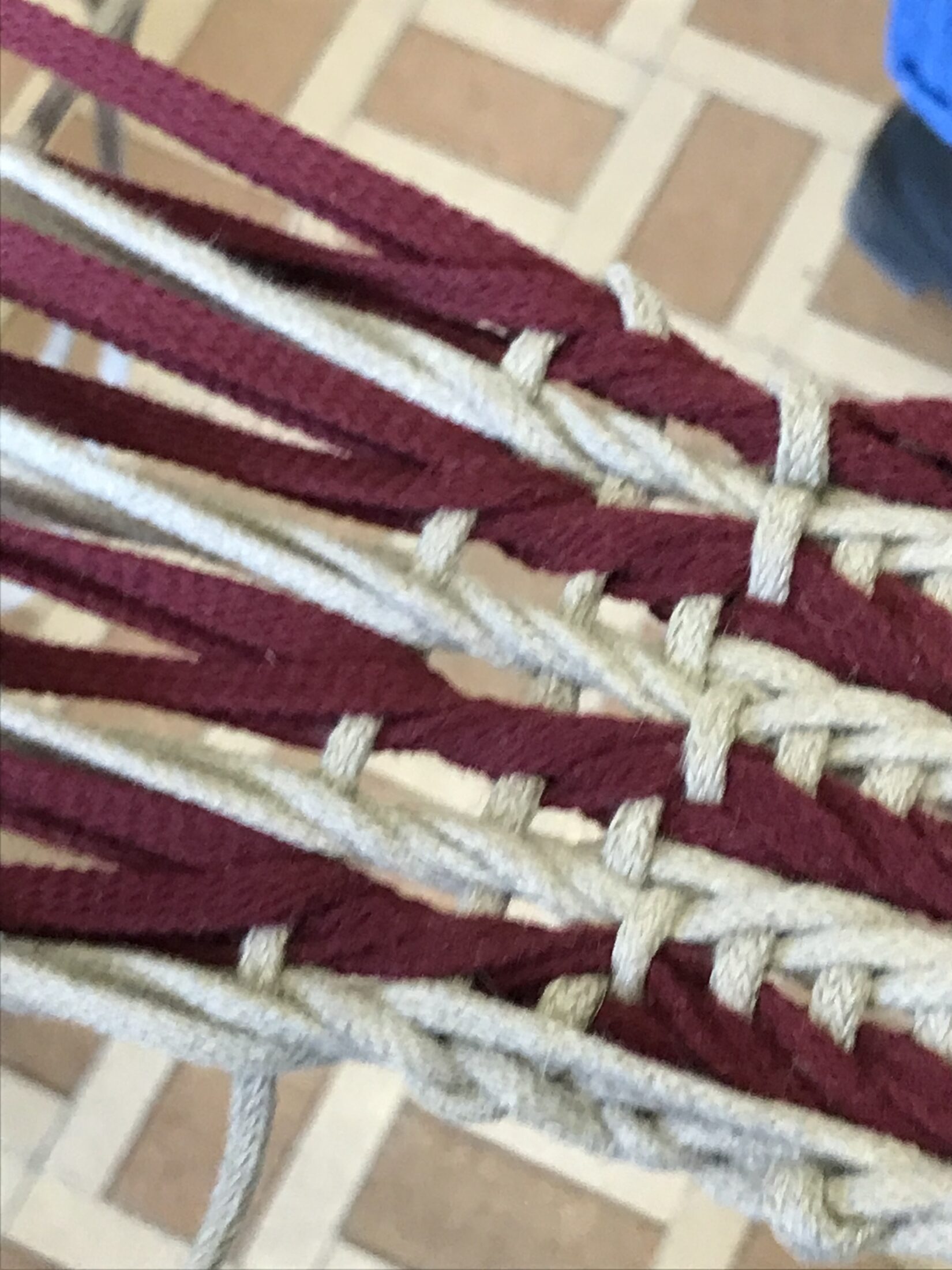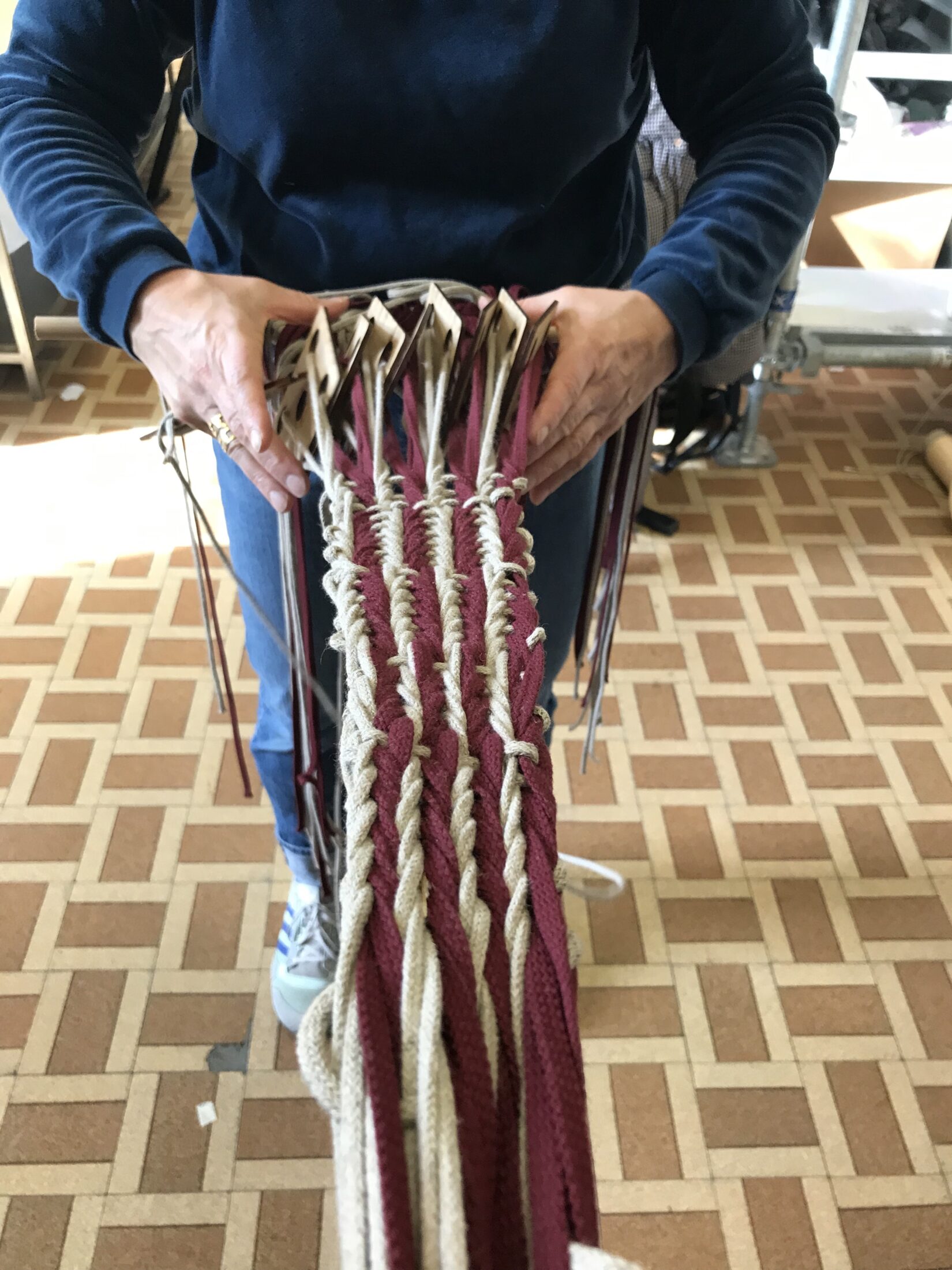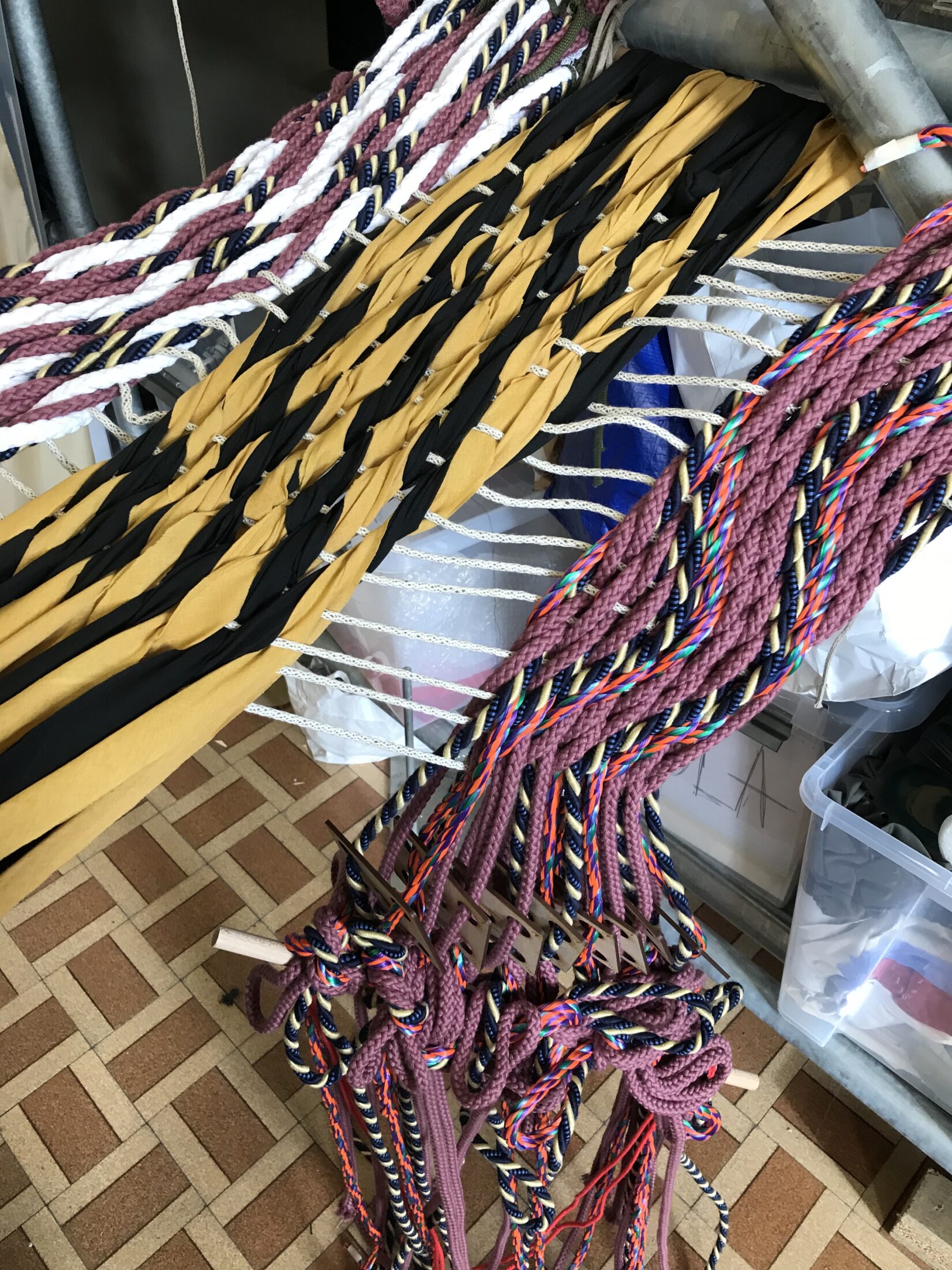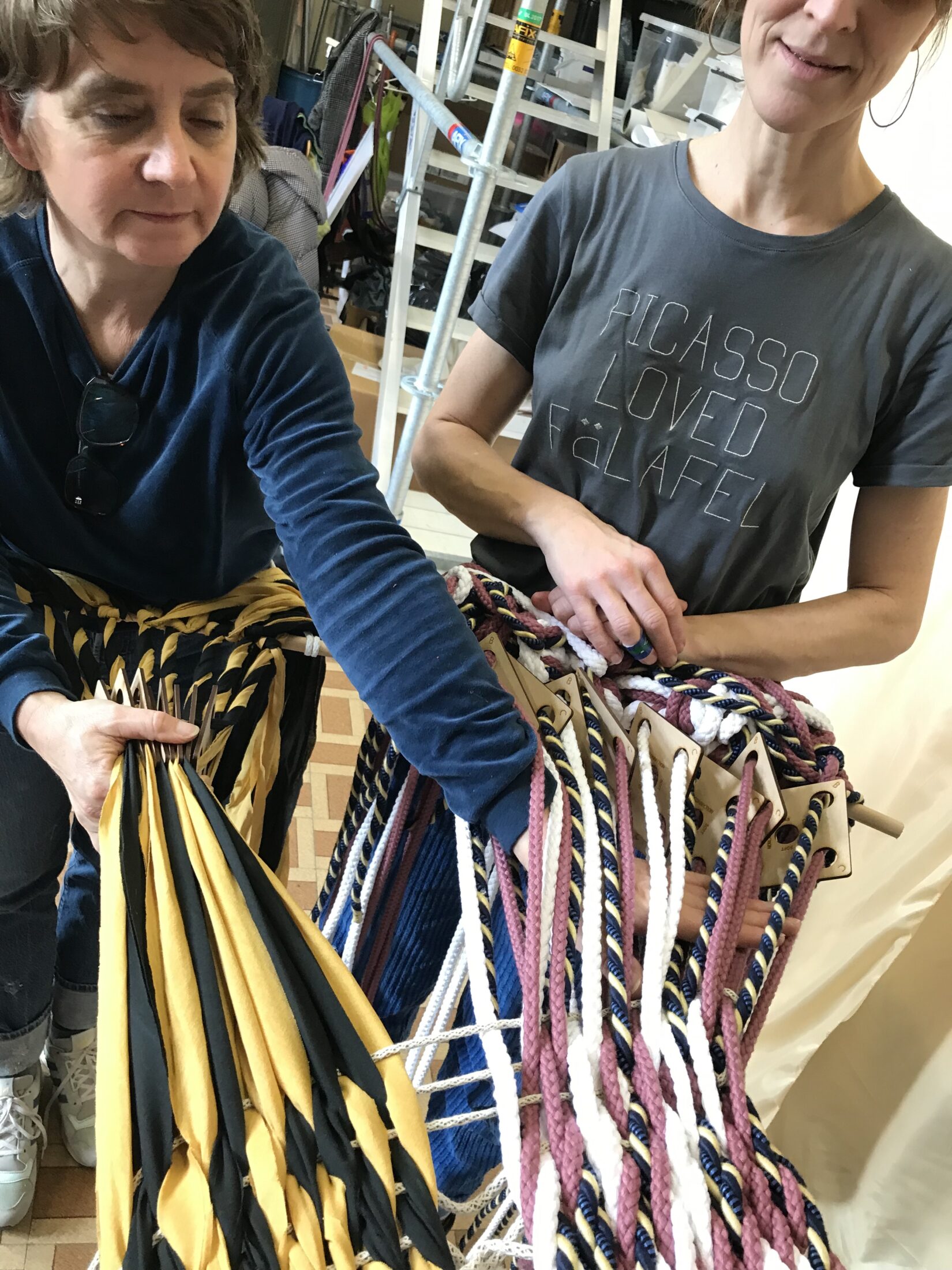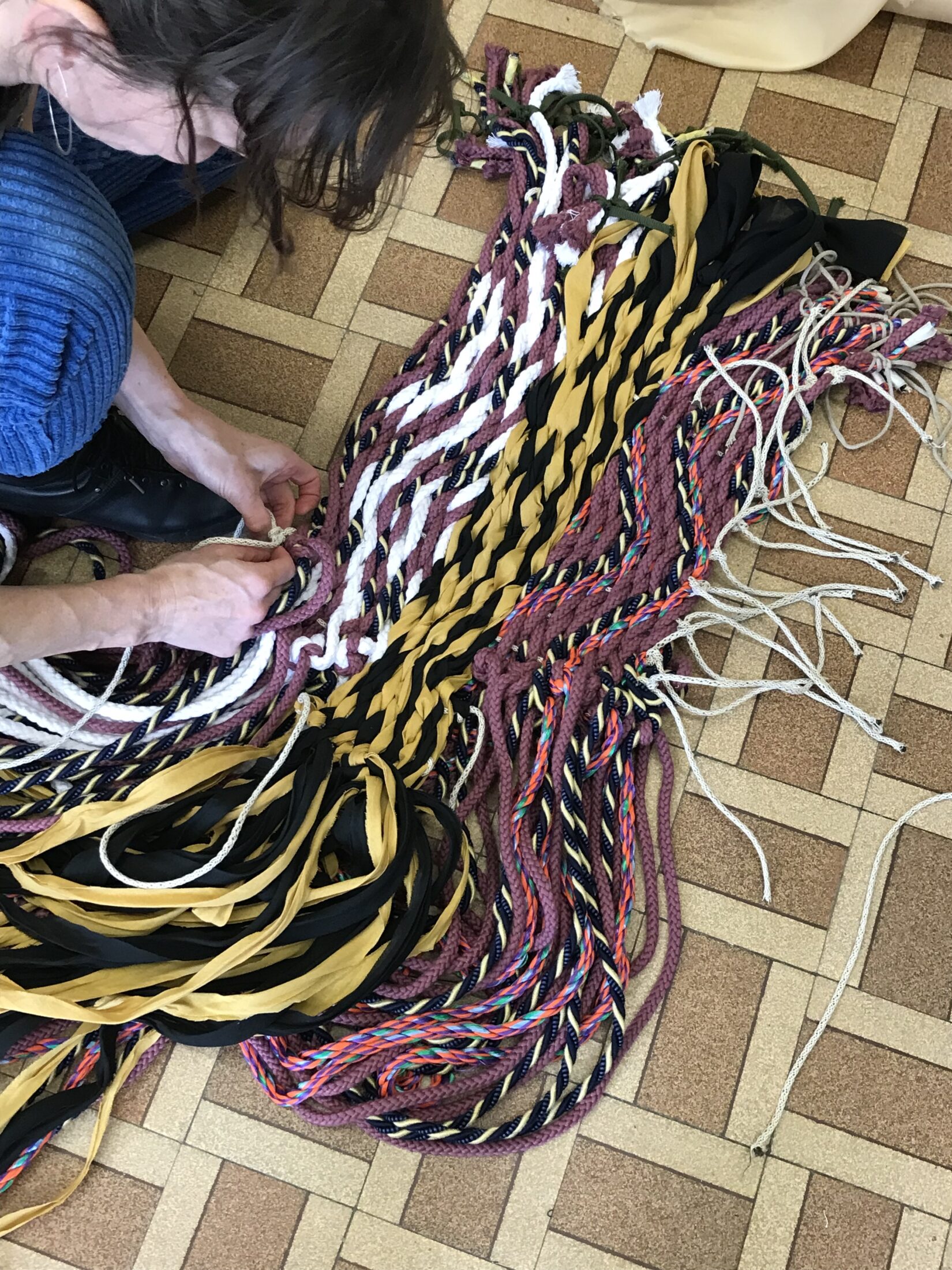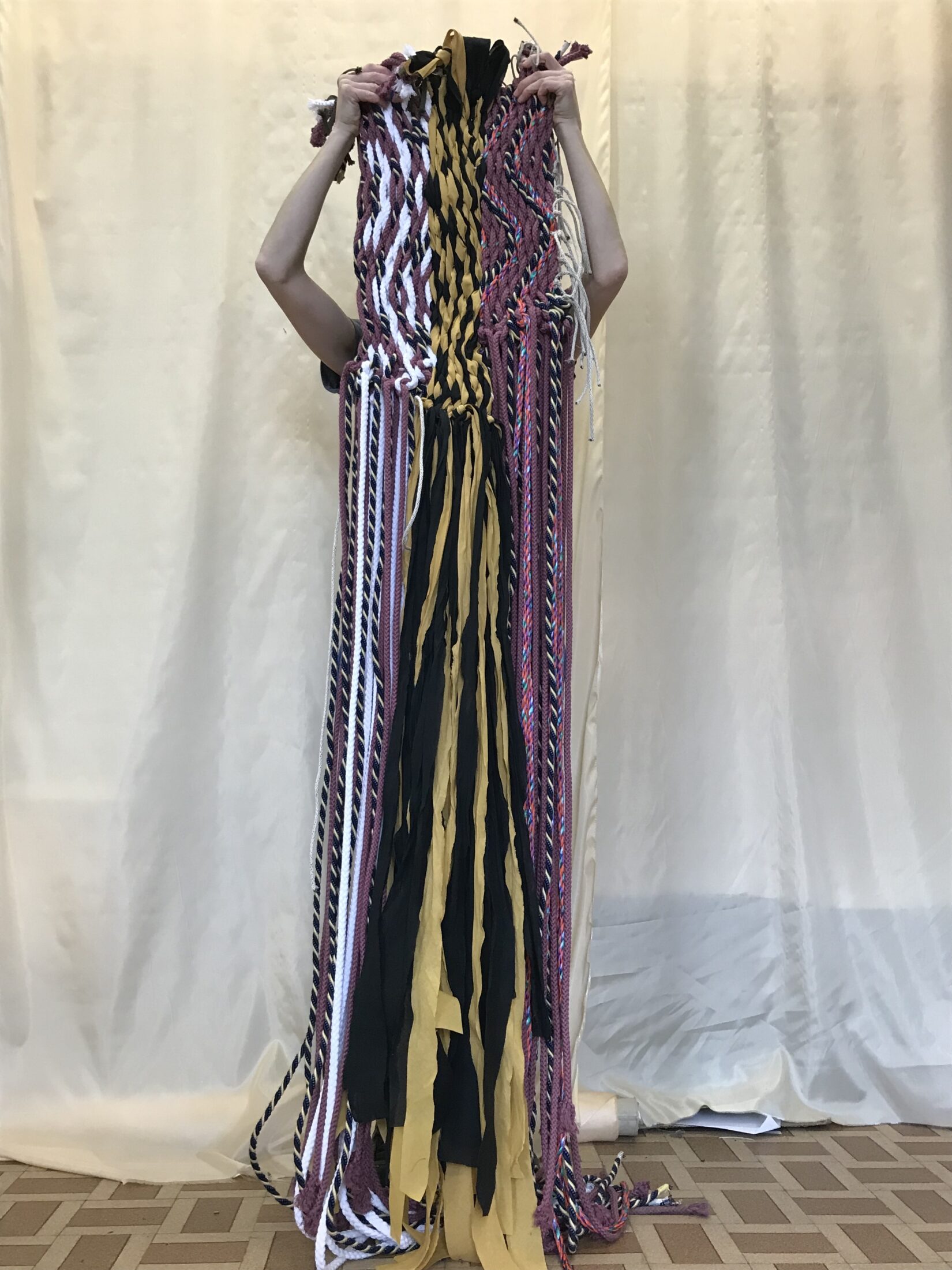First experiments: tablet weaving
Card weaving is a technique that demands almost no tools. Although it is normally done by one single person, we found out that the technique allows to create a wider surface if you work with more people at the same time. This allows to create bigger surfaces, which trigger the imagination.
We decided to categorize card weaving under our Soft Tool ‘Twining’.
During our first year of research, we were focussing specifically on some chosen braiding techniques. One of these techniques is card weaving. As a technique it needs almost no tools.
The intriguing thing is that it is traditionally done by one single person. The weaver holds a set of cards in his hand. This set of cards defines the width of the woven strap. Due to the fact that the hands serve as an important tool, while card-weaving, it is also in a way a restriction and leads to the fact that this weaving method allows only to weave narrow but very strong bands.
Two tests
In the first place, we applied the method of scaling the technique up. Instead of using ordinary thin threads, we decided to use big ropes. This allowed us to create a better insight in the technique itself. One of these scaled-up tests resulted in a small woven carpet.
The second step implied the exploration of the boundaries of the technique. Although it is traditionally only woven by one person, we decided to set up a scaled-up warp of a card weaving for three people. We opted again for thicker materials such as ropes and fabric straps.
On the images below you see the result. Weaving with more people allowed us to create a wider surface. We believe there is no limit in the amount of people that could do the tablet weaving together, creating bigger surfaces. This opens up the possibilities for a contemporary use of the technique in different disciplines.
